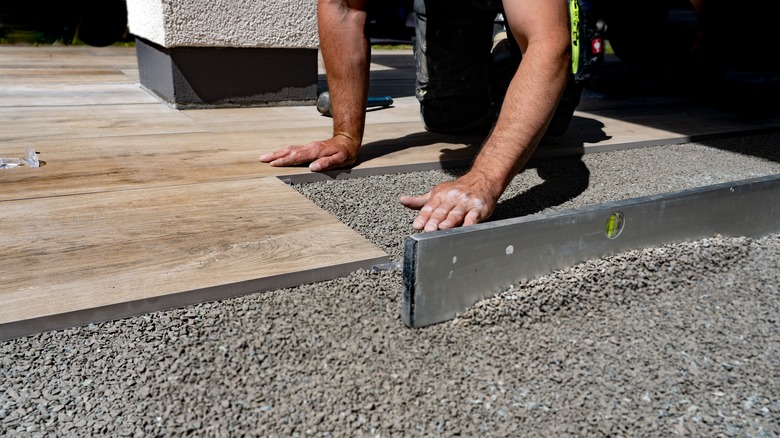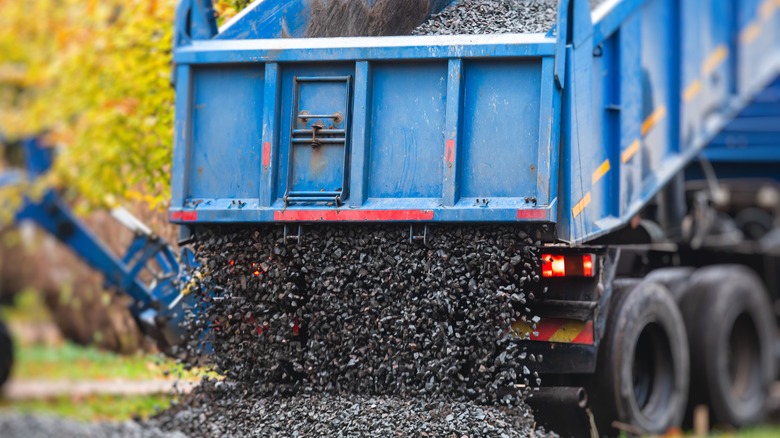How To Figure Out How Much Gravel Your DIY Patio Needs
Are you trying to design the perfect patio in your yard? Apart from choosing elegant pavers and deciding on a trendy shape, you're responsible for a few more tedious but equally important tasks. Crucially, you must calculate all the material quantities, which include the gravel base that goes beneath the pavers. If you underestimate the gravel quantity, you'll be forced to make unplanned, last-minute trips to the supply store, or worse, take shortcuts and lay down less gravel than needed. Conversely, overestimating your needs will leave you with a useless pile of gravel at the end of the project. To save time and money, you want to avoid these mistakes when designing your patio.
At a glance, calculating the gravel quantity is a simple enough task that requires nothing more than basic arithmetic. To get an estimate of the gravel quantity, you multiply the patio length by its width and then again by the depth of the granular layer. Sounds easy, right? Well, there's a bit more nuance to the calculation. For one, you probably already know that a solid gravel base is a vital element that ensures the stability and evenness of the pavers. To give this base sufficient strength, you need to establish the gravel layer depth. Likewise, you'll need to decide on the gravel size, which will, in turn, dictate its weight — it's this final number that you'll hand to the clerk at the material supply store when making your purchase. Below, we'll walk you through an example in which we calculate the gravel quantity for a standard residential patio. You'll be able to emulate the same steps in your calculation.
Steps for calculating the required gravel quantity
Let's assume you're planning to pave a 15 by 20-foot area for a patio in your backyard. Great — two of the key variables in our formula are already known: 15 feet and 20 feet. Now, let's consider the gravel depth. Generally, you want a granular layer that's at least 4 inches deep; however, boosting the depth to 6 inches could be a wise move that gives the base a bit more strength. Assuming we go with a 6-inch-deep layer, we have the three variables needed to calculate the gravel volume — a 20-foot length, a 15-foot width, and a 0.5-foot depth. Multiplying length by width by depth gives us 150 cubic feet of gravel. Now, let's convert this product to cubic yards. One cubic yard contains 27 cubic feet, so we divide 150 by 27 and end up with 5.56 cubic yards.
Now, gravel is typically sold by the ton, so we still have to determine the weight of this material. There are different types of gravel, but let's say we're going with ¾-inch gravel, which is fairly standard in a patio base application. Let's say one cubic yard of ¾-inch gravel weighs 2,565 pounds. To get the total weight in pounds, we multiply the total volume (5.56 cubic yards) by 2,565 and get 14,261 pounds of gravel. Finally, we divide this product by 2,000 to convert it to tons and get 7.13 tons. That's it — you can take this gravel weight to the material supplies store and make your purchase.

